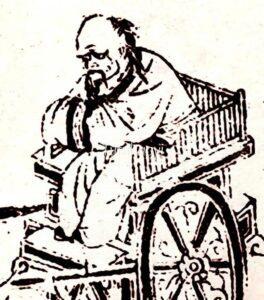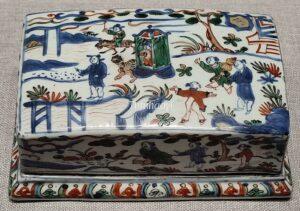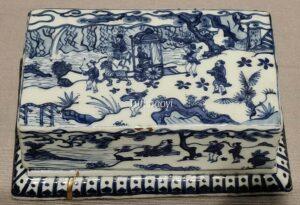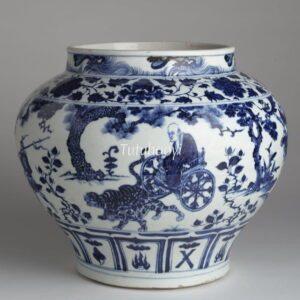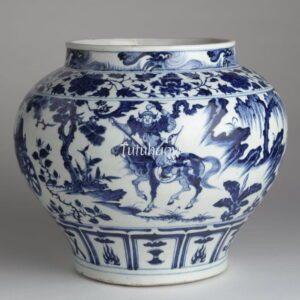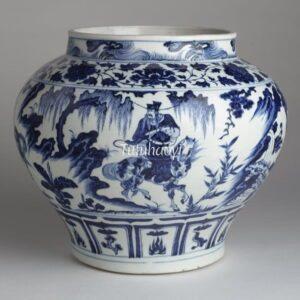Guiguzi descending the mountain
鬼谷子下山
© Tutuhaoyi.com owns the copyright of the description content for the images attached. Quoting all or part of the description content on this page is permitted ONLY IF ‘Tutuhaoyi.com’ is clearly acknowledged anywhere your quote is produced unless stated otherwise. (本页描述内容版权归Tutuhaoyi.com所有,转发或引用需注明 “Tutuhaoyi.com”, 侵权必究, 已注开源信息的条目除外。)
The true name of Guiguzi (鬼谷子) remains unknown due to insufficient historical records, although some suggest the name ‘Wang Yi’. Legend has it that Guiguzi was a figure from the Warring States period (475–221 BCE), renowned as both a recluse and a political thinker, strategist, and Daoist. He is considered the founder of the School of Diplomacy. He earned the name ‘Guiguzi’, meaning ‘The Sage of the Ghost Valley’, due to his seclusion in the Ghost Valley (鬼谷).
According to the Records of the Grand Historian (Shiji, 史记), the notable strategists Su Qin and Zhang Yi were his disciples. Later generations added that the famous Warring States generals Sun Bin (孙膑) and Pang Juan (庞涓) were also among his eminent students.
The story of ‘Guiguzi Descending the Mountain’ is a fictional account originating from the Yuan dynasty woodblock print The Posthumous Collection of the Annals of the Seven States of Qi. It narrates an episode from the Warring States period in which Sun Bin, serving the State of Qi, was imprisoned by the State of Yan during a conflict between the two. At the persistent request of Qi’s envoy, Su Dai (苏代), Guiguzi descended the mountain in a chariot drawn by two tigers to rescue his disciple.
story scene description by Rachel Ma
Other figural stories:
Jiang Ziya Was Discovered Angling by Baron of Zhou by the Wei River 姜太公渭滨垂钓 / 文王访贤
Lord Yellowstone teaching Zhang Liang art of war 黄石授书 (圯下传书)
Fig 1-2: woodblock print The Posthumous Collection of the Annals of the Seven States of Qi, Volume III., 1321–1323, Yuan dynasty, original copy preserved in the Cabinet Library of Japan
Fig 3: wucai porcelain container, Wanli period (1573–1620), Ming dynasty, courtesy of the Palace Museum, Beijing, China
Fig 4: porcelain container with underglaze blue decoration, Wanli period (1573–1620), Ming dynasty, courtesy of Tokyo National Museum, Japan
Fig 5-8: porcelain jar with underglaze blue decoration, discovered in the Republic Period (1912–49), courtesy of the Eskenazi collection

